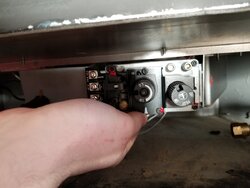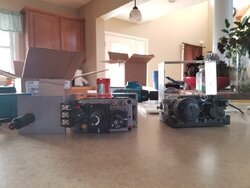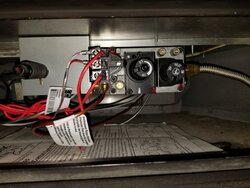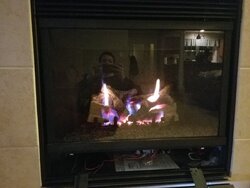This has the Honeywell valve with rf control, I can easily light the pilot but and the led begins blinking showing that the valve is powered, but as soon as I release the pilot knob the flame goes out.
I measured the thermopiles at .5v and .4v while pilot lit, plugged into control valve.
Any suggestions?
Edit: tested the thermopiles open circuit and they were .5 and .7v
I measured the thermopiles at .5v and .4v while pilot lit, plugged into control valve.
Any suggestions?
Edit: tested the thermopiles open circuit and they were .5 and .7v
Last edited:


 !
!


